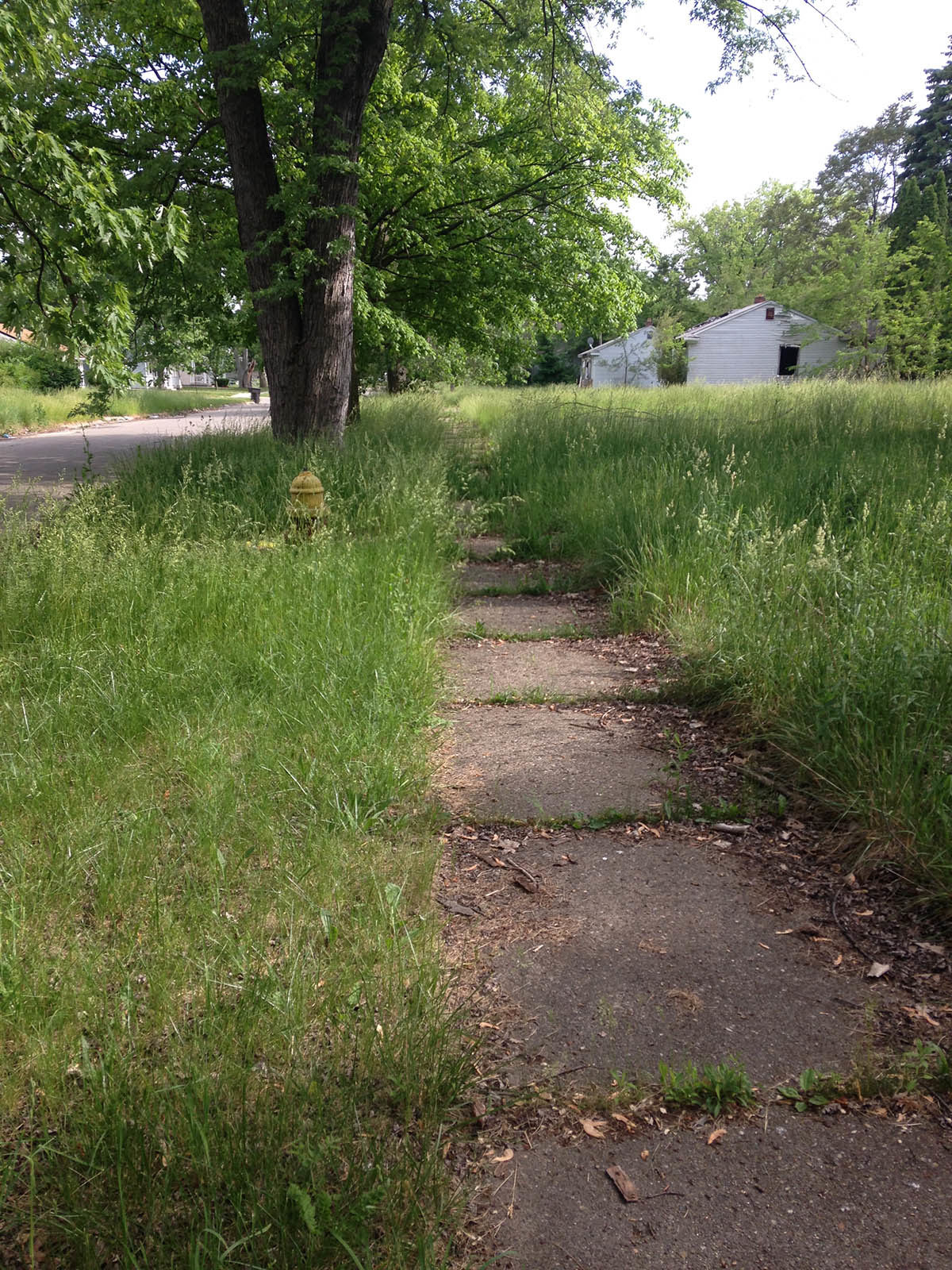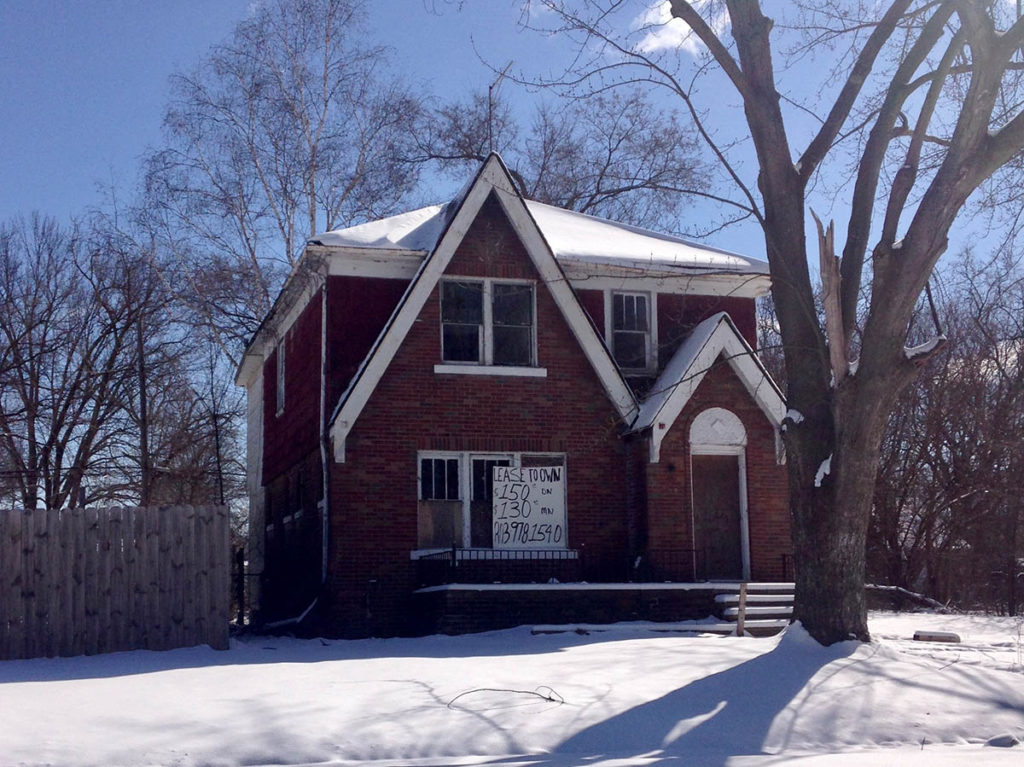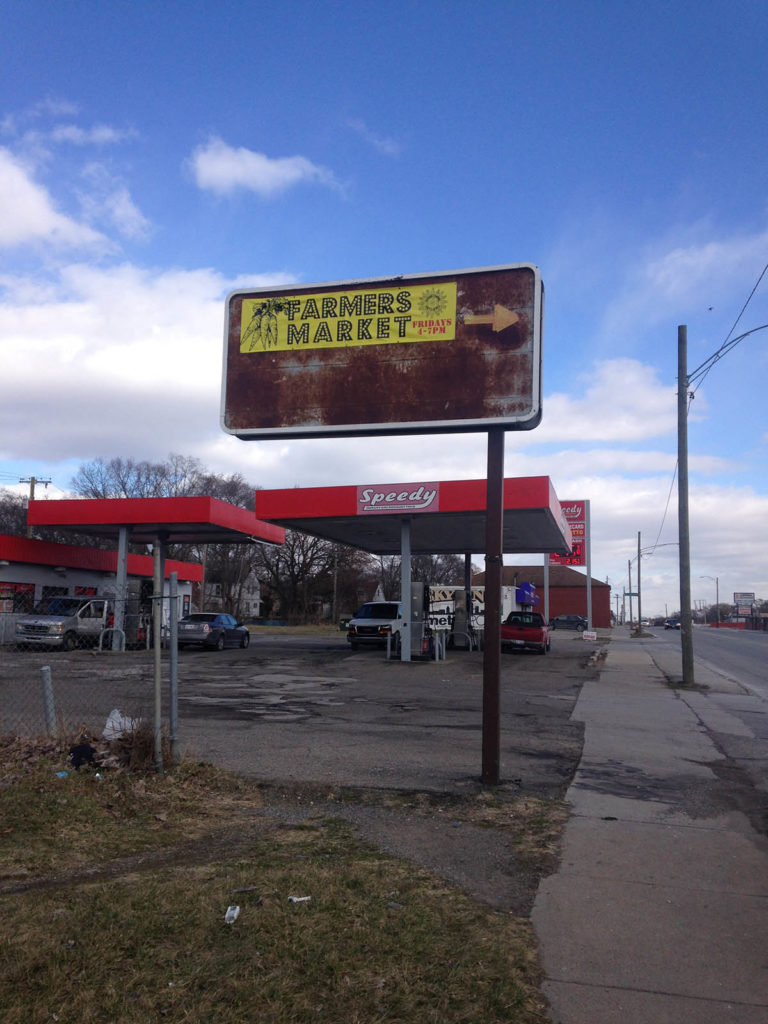Cutting the Tall Grass

Tall grass overtakes sidewalks, city strips, and fire hydrants during Detroit summers.
by Sharon Cornelissen (Postdoctoral Fellow)
Sharon Cornelissen lived and became a homeowner as an ethnographic researcher in Brightmoor, Detroit for three years (2015-2018)—one of the United States’ most depopulated, poor, Black neighborhoods. Since 1970 Brightmoor had lost over half of its residents, while it turned from all-white to 83% Black. Wildflowers flourished here amidst hundreds of emptied homes. Residents saw wild deer as often as they heard gunshots. And in 2006, a surprising new phenomenon began: white middle-class newcomers started to move in, who called themselves “urban farmers” and planted gardens and farms on vacated lots.
Drawing on over 1500 pages of ethnographic fieldnotes and 70 in-depth interviews, Sharon is writing the book Cutting the Tall Grass, in which she sets out to answer two core questions: One, how did extreme decline and depopulation affect the lives of Black and white longtimers? And two, why did middle-class white newcomers move to this devastated place? To answer these questions, she will show how decades of neighborhood decline shaped racialized losses and opportunities, hardship and privilege, and trauma and coping, as devastated Brightmoor faced early gentrification.
Her book revolves around four key chapters. First, she will explain how and why so many longtime Detroiters lost their homes a decade after the subprime mortgage crisis decimated Black communities across the United States. As many Brightmoor homes had become worth less than second-hand cars, and with little to no credit available, many residents became forced to treat their most prized possession as a disposable good: something they were using up. Many longtimers lost their homes to tax foreclosures, often after years of hardship, lost jobs, burnt-out furnaces, leaking roofs, and grief and worries.

Second and by contrast, she will show how white newcomers turned this housing distress into exclusive opportunities. She describes the moral code newcomers used to navigate buying in a market haunted by loss and shows how newcomers turned lost homes into prized Detroit urban farmhouses. She argues that their relative privilege was instrumental to help them profit from one of the United States’ most depressed property markets. Longtimers’ tragedies became white newcomers’ opportunities.
Another chapter of the book examines how longtimers and white newcomers differently related to the return of greenery in depopulated Brightmoor. Some vacated blocks more resembled rolling fields than anything else. Most longtime residents hoped that Brightmoor would regain urban density. They decried wildflowers and tall grasses as weeds. Many vigorously mowed vacant lots. White newcomers, by contrast, supported wildflower fields and housing demolition without rebuilding. They viewed vacated blocks as country-like and kept chickens, goats, and honeybees. What Sharon calls “traumas of decline” shaped whether residents foregrounded depopulated nature as blight or bucolic, as urban absences left in the wake of depopulation and disinvestments, or as new rural presences, signaling Brightmoor’s incipient ruralization. Acting on and with nature, residents worked through ideals of decency and respectability, through feelings of control and anxieties about violence, and through conflicting dreams of urbanism or post-urbanism.
Finally, she discusses how white newcomers’ and longtimers’ different relationships to the neighborhood’s past shaped their public lives. Traumas of neighborhood decline and historical violence lingered for longtimers on street corners, in fields of tall grass, and in unsuspecting moments. By contrast, for white newcomers, historical violence was only a fact of oral history, rather than lived biography. Their strategies for navigating public life came from positions of white privilege, and their aspirations for Brightmoor were often based on their experiences growing up in white, middle-class neighborhoods. As a result, white newcomers often acted in ways that other residents considered unsafe, such as by organizing a weekly farmers’ market across from a notorious open-air drug market.

Overall, this project makes significant contributions towards understanding the relationships between urban decline, gentrification, and racial inequality. It also calls for scholars to incorporate an understanding of traumas of decline into their analyses of the detrimental impacts of neighborhood disadvantage. The book offers a thorough analysis of such trauma, its relationship to racialized dispossession, to coping, and dreams of redemptive urbanism. Conversely, it unpacks the distinct orientations, privileges, and historical conditions of white gentrifiers, by closely examining this unusual case of early gentrification.